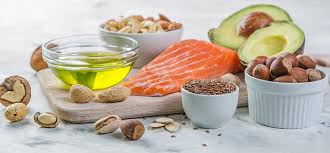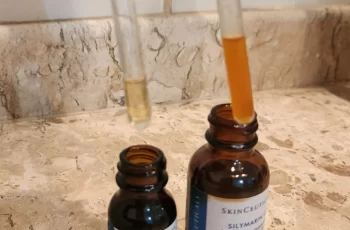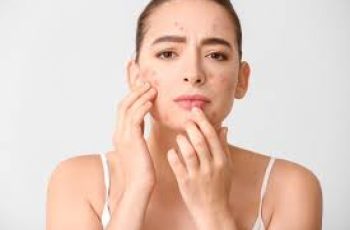
Best Foods for Your Skin Type
As a dermatologist with dry, rosacea-prone, sensitive, wrinkle-prone skin that is even toned (Baumann Skin Type 4: DSNW), I understand firsthand how the foods we eat impact our skin health and appearance. What you put into your body is just as important as the products you apply topically when it comes to achieving glowing, healthy skin. In this blog post, I’ll discuss the connections between skin type and diet, and provide detailed recommendations on the best foods to eat for each of the 16 Baumann Skin Types.
Don’t know which Baumann Skin Type you are?
Take the skin type quiz!
Skin Type and Diet
The foods we consume can have a significant impact on common skin concerns. Let’s take a closer look at how diet affects dry/dehydrated skin, oily skin, sensitive skin, acne-prone skin, rosacea-prone skin, hyperpigmented skin, and aging/mature skin. The foods mentioned below or oilsfrom these foods can help your skin type get healthier.
Diet for Dry/Dehydrated Skin
If you have dry or dehydrated skin, focus on consuming foods rich in healthy fats like omega-3 fatty acids to help strengthen your skin’s protective barrier and lock in moisture. Good sources include fatty fish (salmon, mackerel, sardines), flaxseeds, chia seeds, walnuts, and avocados. These foods can help combat the tight, rough, flaky feeling associated with dry skin.
Oily Skin
While it may seem counterintuitive, eating the right kinds of fats can actually help regulate sebum production in oily skin types. Opt for foods high in omega-3s and monounsaturated fats like nuts, seeds, and olive oil. Avoid processed, greasy foods and those high in refined sugars and carbohydrates, as these can exacerbate oiliness and lead to clogged pores.
Sensitive Skin
For sensitive skin types, an anti-inflammatory diet is key. Focus on antioxidant-rich fruits and vegetables like berries, leafy greens, and orange and yellow produce to help calm irritation and redness. Incorporate soothing, probiotic-rich foods like yogurt and kefir to support your skin’s microbiome. Avoid common dietary triggers like spicy foods, alcohol, and caffeine.
Acne-Prone Skin
If you /blogs/skincare/acnestruggle with acne, steer clear of high-glycemic index foods that cause blood sugar spikes, such as white bread, sugary snacks and drinks, and processed foods. These can trigger inflammation and excess sebum production. Instead, reach for low-glycemic options like whole grains, legumes, and fibrous vegetables. Foods rich in zinc, like pumpkin seeds and shellfish, and vitamin A, like sweet potatoes and spinach, may also help control breakouts.
Rosacea Prone Skin
Similar to sensitive skin, an anti-inflammatory diet is beneficial for rosacea-prone types. Incorporate cooling foods like cucumber and watermelon, and omega-3-rich options like wild salmon and chia seeds. Some people find that limiting hot beverages and spicy foods helps minimize flushing and redness. Keep a food diary to identify your specific dietary triggers.
Hyperpigmented Skin
To help fade dark spots from the inside and achieve a more even skin tone, load up on vitamin C-rich foods like citrus fruits, berries, and leafy greens. These powerful antioxidants can help inhibit melanin production. Colorful carotenoid-packed produce like tomatoes, carrots, and sweet potatoes may also have a protective effect against sun damage, which can worsen hyperpigmentation.
Aging/ Mature Skin
A diet rich in antioxidants is your best defense against premature aging. Fill your plate with a rainbow of fruits and vegetables to fight free radical damage and promote collagen production. Good sources include berries, leafy greens, nuts, and green tea. Foods high in healthy fats, like avocados and olive oil, can also help keep mature skin supple and moisturized.
Best Foods by Baumann Skin Type
Now that we’ve covered the general dietary guidelines for different general skin concerns, let’s dive into more specific recommendations based on the 16 Baumann Skin Types. For each type, I’ll identify the key skin issues to address and the best foods for your skin type to incorporate into your diet for glowing, healthy skin.
Baumann Skin Type 1: DSPT (Dry, Sensitive, Pigmented, Tight)
Choose foods to address these skin issues: Dehydration, Inflammation, Hyperpigmentation
Foods to Eat for DSNT Skin Types:
Omega-3-rich foods like wild salmon, sardines, chia seeds, and flaxseeds to combat dryness and inflammation. The anti-inflammatory properties of omega-3s can help soothe irritation and redness associated with sensitive skin.
Antioxidant-packed green tea, which contains polyphenols that have been shown to reduce inflammation and protect against UV damage that can worsen hyperpigmentation.
Vitamin C-rich fruits and vegetables like papayas, strawberries, kiwis, and red bell peppers to help inhibit melanin production and fade dark spots. Vitamin C also supports collagen synthesis to keep skin looking firm and youthful.
Baumann Skin Type 2: DSNT (Dry, Sensitive, Non-Pigmented, Tight)
Choose foods to address these skin issues: Dehydration, Inflammation
Good foods for DSNT to eat:
Healthy fats like avocados, nuts, seeds, and olive oil to strengthen the skin barrier and lock in moisture. These foods are also rich in vitamin E, an antioxidant that helps protect against inflammation.
Probiotic-rich foods like yogurt, kefir, sauerkraut, and kimchi to support the skin’s microbiome and reduce inflammation associated with sensitive skin. Look for options with live active cultures.
Omega-3-rich foods like chia seeds, flaxseeds, and walnuts to help combat dryness and soothe irritation. Omega-3s have been shown to help reduce inflammation in the body.
Baumann Skin Type 3: DSPW (Dry, Sensitive, Pigmented, Wrinkle-Prone)
Problems to address: Dehydration, Inflammation, Hyperpigmentation, Aging
Good Foods for DSPW Skin Types to Eat:
Colorful fruits and vegetables like berries, leafy greens, sweet potatoes, and red bell peppers that are high in antioxidants to combat free radical damage and premature aging. These foods can also help reduce inflammation associated with sensitive skin.
Healthy fats like avocados, nuts, seeds, and fatty fish to provide moisture and plumpness to wrinkle-prone skin. These foods also contain omega-3s that can help reduce inflammation.
Green tea, which is rich in polyphenols that have been shown to reduce inflammation, protect against UV damage, and inhibit melanin production to help fade hyperpigmentation.
Water-rich foods like cucumbers, watermelon, and zucchini to help keep skin hydrated and supple. Dehydration can make fine lines and wrinkles more noticeable.
Baumann Skin Type 4: DSNW (Dry, Sensitive, Non-Pigmented, Wrinkle-Prone)
Problems to Address: Dehydration, Inflammation, Aging
Good Foods for DSNW Skin Types to Eat:
Omega-3-rich foods like wild salmon, sardines, chia seeds, and flaxseeds to help combat dryness and inflammation. These healthy fats can also help plump up wrinkle-prone skin.
Probiotic-rich foods like yogurt, kefir, and other fermented options to support the skin’s microbiome and reduce inflammation associated with sensitive skin.
Antioxidant-rich fruits and vegetables like berries, leafy greens, and orange and yellow produce to fight free radical damage and premature aging. These foods are also high in vitamin C, which supports collagen production.
Bone broth, which is rich in collagen and amino acids that can help improve skin’s elasticity and reduce the appearance of fine lines and wrinkles. The minerals in bone broth, like calcium and magnesium, also support healthy skin.
Baumann Skin Type 5: OSPT (Oily, Sensitive, Pigmented, Tight)
Problems to Address:
Inflammation, Hyperpigmentation, and possibly excess sebum and clogged pores.
Healthy Foods for OSPT to Eat:
Low-glycemic index foods like whole grains, legumes, and fibrous vegetables to help regulate sebum production and reduce inflammation. High-glycemic foods can trigger excess oil production and breakouts.
Green tea, which contains polyphenols that have been shown to reduce inflammation and inhibit melanin production to help fade dark spots. The antioxidants in green tea can also help control excess sebum.
Zinc-rich foods like pumpkin seeds, shellfish, and legumes to help regulate oil production and reduce inflammation. Zinc has been shown to have anti-inflammatory properties and may help reduce acne breakouts.
Antioxidant-rich berries and citrus fruits to help protect against UV damage that can worsen hyperpigmentation. These foods are also high in vitamin C, which can help fade dark spots.
Baumann Skin Type 6: OSNT (Oily, Sensitive, Non-Pigmented, Tight)
Problems to Address: Inflammation and possibly excess sebum and clogged pores.
Best Foods for OSNT Skin Types to Eat:
Low-glycemic index foods like whole grains, legumes, and non-starchy vegetables to help regulate sebum production and reduce inflammation associated with sensitive skin.
Omega-3-rich foods like fatty fish, chia seeds, and flaxseeds to help reduce inflammation and control excess oil production. These healthy fats can also help soothe irritation and redness.
Probiotic-rich foods like yogurt, kefir, and other fermented options to support the skin’s microbiome and reduce inflammation.
Vitamin A-rich foods like sweet potatoes, carrots, and spinach to help regulate sebum production and reduce inflammation. Vitamin A has been shown to have anti-inflammatory properties and may help control acne breakouts.
Baumann Skin Type 7: OSPW (Oily, Sensitive, Pigmented, Wrinkle-Prone)
Problems to Address: Inflammation, Hyperpigmentation, Aging and possibly excess sebum.
Good Foods for OSPW to Eat:
Low-glycemic index foods like whole grains, legumes, and fibrous vegetables to help regulate sebum production and reduce inflammation. These foods can also help control blood sugar levels, which can contribute to premature aging.
Omega-3-rich foods like wild salmon, sardines, and chia seeds to help reduce inflammation and control excess oil production. These healthy fats can also help plump up wrinkle-prone skin.
Antioxidant-rich fruits and vegetables like berries, leafy greens, and citrus fruits to fight free radical damage and premature aging. These foods are also high in vitamin C, which supports collagen production and can help fade hyperpigmentation.
Green tea, which contains polyphenols that have been shown to reduce inflammation, protect against UV damage, and inhibit melanin production to help fade dark spots. The antioxidants in green tea can also help control excess sebum.
Baumann Skin Type 8: OSNW (Oily, Sensitive, Nonpigmented, Wrinkle-Prone)
Problems to Address:
Inflammation, Aging, and possibly excess sebum and clogged pores
Foods to Eat:
Low-glycemic index foods like whole grains, legumes, and non-starchy vegetables to help regulate sebum production and reduce inflammation.
Omega-3-rich foods like fatty fish, chia seeds, and flaxseeds to help reduce inflammation and control excess oil production. These healthy fats can also help plump up wrinkle-prone skin.
Probiotic-rich foods like yogurt, kefir, and other fermented options to support the skin’s microbiome and reduce inflammation associated with sensitive skin.
Antioxidant-rich fruits and vegetables like berries, leafy greens, and orange and yellow produce to fight free radical damage and premature aging. These foods are also high in vitamin C, which supports collagen production.
Baumann Skin Type 9: ORPT (Oily, Resistant, Pigmented, Tight)
Problems to Address: Hyperpigmentation and possibly excess sebum and large or clogged pores.
Good Foods to Eat:
Low-glycemic index foods like whole grains, legumes, and fibrous vegetables to help regulate sebum production.
Antioxidant-rich fruits and vegetables like berries, citrus fruits, and leafy greens to help protect against UV damage that can worsen hyperpigmentation. These foods are also high in vitamin C, which can help fade dark spots.
Zinc-rich foods like pumpkin seeds, shellfish, and legumes to help regulate oil production if you feel your ski is too shiny or your pores are getting clogged, zinc rich foods may help.
Green tea, which contains polyphenols that have been shown to inhibit melanin production and help fade hyperpigmentation.
Baumann Skin Type 10: ORNT (Oily, Resistant, Non-Pigmented, Tight)
ORNT is the best skin type which is why we call it the healthiest skin type. The goal is to keep your skin smooth, glowing, and strong. Eat a varied diet with all the colors of the rainbow. Make sure you include antioxidants to protect your skin.
Baumann Skin Type 11: ORPW (Oily, Resistant, Pigmented, Wrinkle-Prone)
Problems to Address:
Hyperpigmentation, Aging, and maybe large, clogged pores or excessive sebum.
Good Foods for ORPW Skin Types to Eat:
Low-glycemic index foods like whole grains, legumes, and fibrous vegetables to help regulate sebum production and control blood sugar levels, which can contribute to premature aging.
Antioxidant-rich fruits and vegetables like berries, leafy greens, and citrus fruits to fight free radical damage and premature aging. These foods are also high in vitamin C, which supports collagen production and can help fade hyperpigmentation.
Omega-3-rich foods like wild salmon, sardines, and chia seeds to help control excess oil production and plump up wrinkle-prone skin. These healthy fats can also help keep skin moisturized.
Green tea, which contains polyphenols that have been shown to protect against UV damage and inhibit melanin production to help fade dark spots. The antioxidants in green tea can also help control excess sebum.
Fish or Beef Bone broth, which is rich in collagen, amino acids, calcium and magnesium.
Baumann Skin Type 12: ORNW (Oily, Resistant, Non-Pigmented, Wrinkle-Prone)
Problems to Address: Aging’ large pores, clogged pores.
Good Foods for ORNW Skin Types to Eat:
Low-glycemic index foods like whole grains, legumes, and non-starchy vegetables to help regulate sebum production and control blood sugar levels, which can contribute to premature aging.
Omega-3-rich foods like fatty fish, chia seeds, and flaxseeds to help control excess oil production and plump up wrinkle-prone skin.
Antioxidant-rich fruits and vegetables like berries, leafy greens, and orange and yellow produce to fight free radical damage and premature aging. These foods are also high in vitamin C, which supports collagen production.
Bone broth, which is rich in collagen and amino acids that can help improve skin’s elasticity and reduce the appearance of fine lines and wrinkles. The minerals in bone broth, like calcium and magnesium, also support healthy skin.
Baumann Skin Type 13: DRPT (Dry, Resistant, Pigmented, Tight)
Problems to Address:
Dehydration, Hyperpigmentation
Foods to Eat:
Omega-3-rich foods like wild salmon, sardines, chia seeds, and flaxseeds to help combat dryness. These healthy fats can also help keep skin moisturized and supple.
Antioxidant-rich fruits and vegetables like berries, citrus fruits, and leafy greens to help protect against UV damage that can worsen hyperpigmentation. These foods are also high in vitamin C, which can help fade dark spots.
Water-rich foods like cucumbers, watermelon, and zucchini to help keep skin hydrated and plump. Dehydration can make skin look dull and tired.
Green tea, which contains polyphenols that have been shown to inhibit melanin production and help fade hyperpigmentation. The antioxidants in green tea can also help protect against environmental damage.
Baumann Skin Type 14: DRNT (Dry, Resistant, Nonpigmented, Tight)
Problems to Address: Dehydration
Good Foods for DRNT Skin Types to Eat:
Omega-3-rich foods like wild salmon, sardines, chia seeds, and flaxseeds to help combat dryness. These healthy fats can also help keep skin moisturized and supple.
Oils like argan oil, walnut oil, and flaxseed oil help hydrate skin.
Water-rich fruits and vegetables like cucumbers, watermelon, and zucchini to help keep skin hydrated and plump.
Healthy fats like avocados, nuts, seeds, and olive oil to help strengthen the skin barrier and lock in moisture. These foods are also rich in vitamin E, an antioxidant that helps protect against environmental damage.
Collagen-rich foods like bone broth, which contains amino acids that can help improve skin strength and restore collagen. The minerals in bone broth, like calcium and magnesium, also support healthy skin.
Baumann Skin Type 15: DRPW (Dry, Resistant, Pigmented, Wrinkle Prone)
Problems to Address: Dehydration, Hyperpigmentation, Aging
Best Foods for DRPW Skin Type to Eat:
Omega-3-rich foods like wild salmon, sardines, chia seeds, and flaxseeds to help combat dryness and plump up wrinkle-prone skin. These healthy fats can also help keep skin moisturized and supple.
Antioxidant-rich fruits and vegetables like berries, leafy greens, and citrus fruits to fight free radical damage and premature aging. These foods are also high in vitamin C, which supports collagen production and can help fade hyperpigmentation.
Green tea, which contains polyphenols that have been shown to protect against UV damage and inhibit melanin production to help fade dark spots. The antioxidants in green tea can also help keep skin looking youthful.
Water-rich foods like cucumbers, watermelon, and zucchini to help keep skin hydrated and plump. Dehydration can make fine lines and wrinkles more noticeable.
Baumann Skin Type 16: DRNW (Dry, Resistant, Nonpigmented, Wrinkle Prone)
Problems to Address: Dehydration, Aging
Best Foods for DRNW Skin Type to Eat:
Omega-3-rich foods like wild salmon, sardines, chia seeds, and flaxseeds to help combat dryness and plump up wrinkle-prone skin. These healthy fats can also help keep skin moisturized and supple.
Antioxidant-rich fruits and vegetables like berries, leafy greens, and orange and yellow produce to fight free radical damage and premature aging. These foods are also high in vitamin C, which supports collagen production.
Healthy fats like avocados, nuts, seeds, and olive oil to help strengthen the skin barrier and lock in moisture. These foods are also rich in vitamin E, an antioxidant that helps protect against environmental damage.
Collagen-rich foods like bone broth, which contains amino acids that can help improve skin’s elasticity and reduce the appearance of fine lines and wrinkles. The minerals in bone broth, like calcium and magnesium, also support healthy skin.
Conclusion
As you can see, while each Baumann Skin Type has its own unique set of concerns, there are some common themes when it comes to the best foods for glowing, healthy skin. In general, a diet rich in antioxidants, healthy fats, and water-rich fruits and vegetables can help keep skin looking its best, regardless of type. By incorporating these nutrient-dense foods into your daily meals and snacks, you’ll be well on your way to achieving a radiant, healthy complexion from the inside out.


